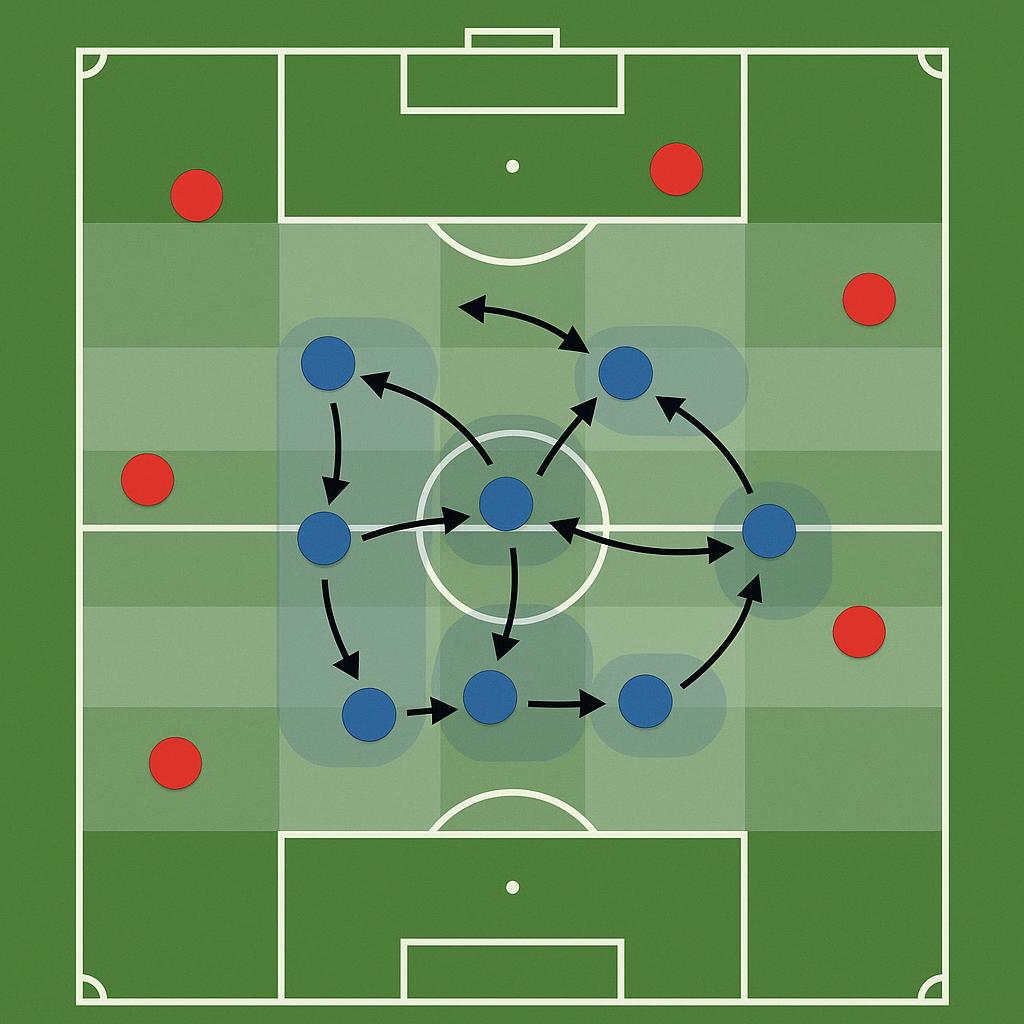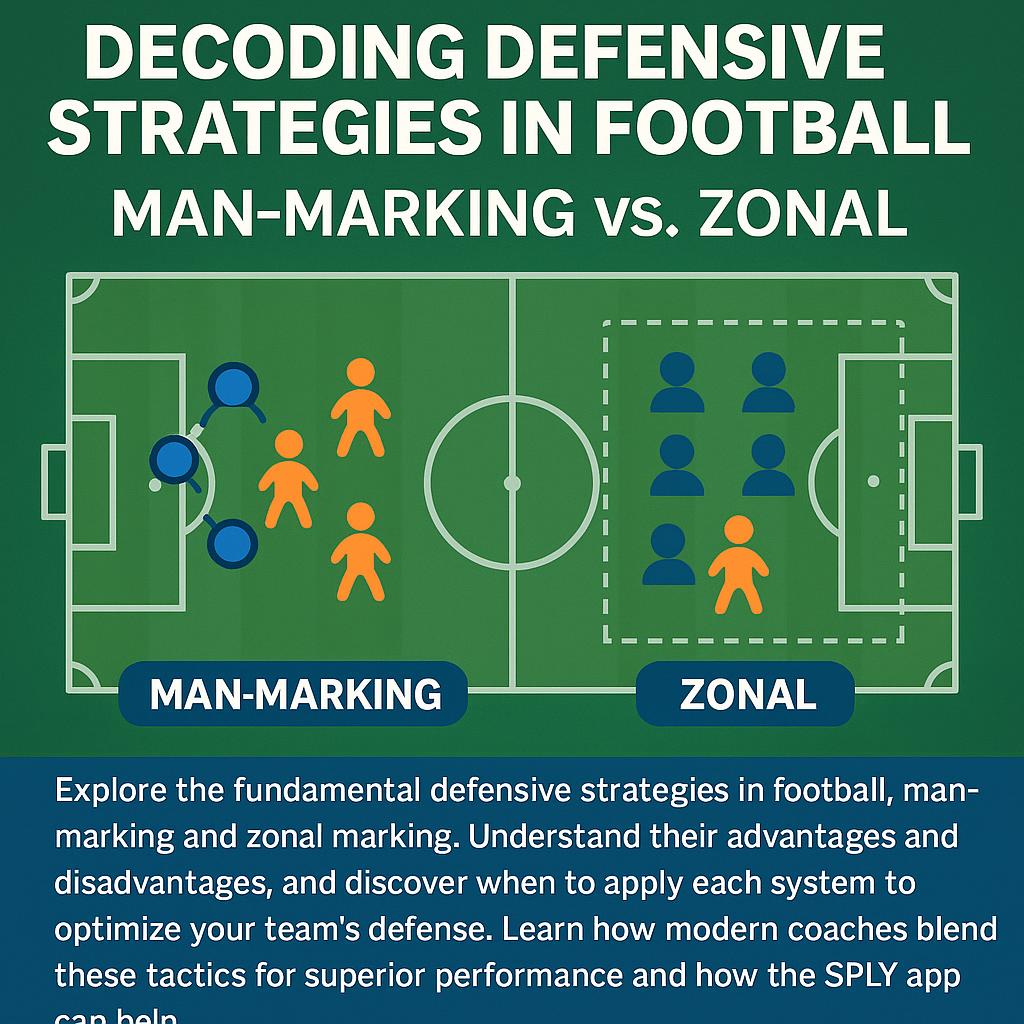Football, or soccer as many call it, is a game of constant adaptation, especially when it comes to defending. How a team organizes itself without the ball often dictates its success. Have you ever wondered why some teams seem to stifle opponents effortlessly while others leak goals? The answer often lies in their chosen defensive strategies, specifically the fundamental approaches of man-marking and zonal marking.
Understanding these core concepts is crucial for players, coaches, and even enthusiastic fans. Let us delve into the nuances of each system, exploring their strengths, weaknesses, and when they are best applied on the pitch.
Understanding Man-Marking
Man-marking is a straightforward, direct defensive approach. In this system, each defender is assigned to a specific opponent. Their primary responsibility is to follow and deny that player space and time, regardless of where they move on the pitch. Think of it like a shadow, with the defender constantly trying to stick to their assigned attacker.
The advantages of man-marking are clear. It provides immediate accountability, as each defender knows exactly who they are responsible for. This can be highly effective against teams with one or two star players, allowing you to nullify their primary threats directly. It applies tight pressure on the ball carrier and can disrupt an opponent's rhythm, making it difficult for them to play their natural game. We often see it used in set-piece situations, where defenders are tasked with preventing specific aerial threats from getting to the ball.
However, man-marking also has its disadvantages. Defenders can be pulled out of position, creating large gaps in the defensive line if their assigned player moves into wide or deep areas. This can compromise the overall team shape, making the defense vulnerable to other attackers exploiting the newly created space. It is also incredibly physically demanding, requiring defenders to have exceptional stamina and concentration for the entire match. If an attacker is particularly adept at intelligent off-the-ball runs, they can easily lose their marker or drag them into uncomfortable areas.
When should you apply man-marking? It is often most effective when you need to shut down a specific, dangerous individual on the opposing team. If you face a striker who scores nearly every game, assigning a dedicated marker to them can be a viable strategy. It can also be useful when your team has superior individual defensive talent compared to the opposition's attackers.
Understanding Zonal Marking
In contrast to man-marking, zonal marking focuses on defending space rather than specific players. Each defender is responsible for a designated area, or zone, on the pitch. When an opponent enters their zone, they become that defender's responsibility. As the opponent moves out of the zone, they become the responsibility of the next defender whose zone they enter. It is like a well-coordinated dance, with defenders passing on responsibility as attackers move through their territories.
The advantages of zonal marking revolve around maintaining team shape and compactness. It ensures that there are always defenders covering crucial areas of the pitch, reducing large gaps. This makes the team harder to break down, particularly through the center. It is less physically demanding on individual players, as they are not constantly chasing an opponent across the pitch. Instead, they hold their position, conserve energy, and shift collectively as a unit. This system also promotes better collective pressing and easier transitions from defense to attack, as players are already in predefined positions.
Yet, zonal marking has its challenges. It requires exceptional communication and understanding among defenders. A slight miscommunication or delay in shifting can leave open seams for attackers to exploit, particularly between zones. Attackers can find pockets of space between defenders if the collective shift is not precise, allowing them time and space on the ball. It can also be vulnerable to numerical overloads in specific zones, where more attackers enter an area than there are defenders to cover them. This often happens with clever runs from midfield.
When is zonal marking the preferred option? It is generally applied when a team prioritizes maintaining a solid, compact team shape and controlling central areas. It is highly effective against fluid attacking teams that rely on movement and interchanging positions, as defenders do not get dragged out of position. Many modern teams use zonal systems to facilitate quick counter-attacks, as defenders are already in good starting positions once possession is won.

Hybrid Approaches and Adaptability
In contemporary football, very few teams employ a pure man-marking or pure zonal system throughout an entire match. Most successful teams utilize a hybrid approach, blending elements of both. For instance, a team might predominantly use zonal marking for its overall defensive structure, but assign a man-marking duty to a specific player for a dangerous opposition forward. They might switch to tighter man-marking in their own penalty box during crosses, or revert to zonal when pressing high up the pitch.
The importance of tactical flexibility cannot be overstated. Coaches constantly analyze opponents, game situations, and their own players' strengths to decide which approach, or blend, will be most effective. A coach might start with a zonal setup, but if an individual attacker is causing too many problems, they might instruct a player to man-mark them for a period. Similarly, if the opponent starts overloading a specific zone, the defending team needs the adaptability to adjust their coverage.
The Coach's Role in Implementation
Implementing these complex defensive strategies requires clear communication, repetitive training drills, and insightful tactical sessions. Coaches must ensure that every player understands their role, whether it is covering a specific player or a specific area. Visual aids are invaluable in this process. How do you effectively show players how to shift as a unit in a zonal system, or how a defender must track their man through various movements?
This is where innovative tools become indispensable for soccer coaching. Our app, SPLY, available on iOS, is designed precisely for this purpose. It is a video soccer coach board that simplifies the process of sharing drills and tactics with your team. With SPLY, you can effortlessly create intricate tactical boards, detailing player movements for both man-marking and zonal schemes. You can edit these boards in real-time, making adjustments as you explain. Perhaps the most powerful feature is the ability to create a video demonstration where your face and voice are added to the board video while you are drawing or moving things. Imagine explaining the precise timing of a zonal shift or the disciplined tracking in man-marking, showing it dynamically on the screen.
Conclusion
Deciphering defensive strategies like man-marking and zonal marking reveals the intricate tactical depth of football. Both approaches offer distinct advantages and disadvantages, and the most effective teams are those that can adapt and combine elements from each. Whether your team needs to shut down a star player or maintain an impenetrable team shape, understanding these systems is fundamental. For coaches looking to explain these complex tactics with clarity and precision, consider exploring SPLY. It provides an intuitive platform to visualize, explain, and share your football tactics, helping your team master the art of defending and elevate their game. Equip yourself with the right tools, and transform your team's defensive prowess. Download SPLY today and start building your winning strategies.
